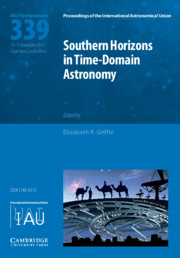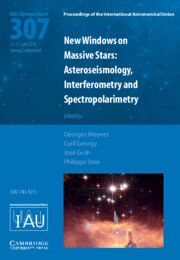From Interacting Binaries to Exoplanets (IAU S282)
In IAU Symposium 282, members of the exoplanet and binary star communities unite for the first time to discuss the state-of-the-art discovery, imaging, modeling and analysis tools used to study stars, brown dwarfs and exoplanets in multiple-object systems. They describe detection techniques using advanced telescopes and detectors, including the Kepler mission and the proposed Gaia and LSST projects. Imaging techniques discussed include adaptive optics, interferometry, polarimetry and tomography, while key modeling tools are covered in detail. Other topics include simulations of formation mechanisms in binary star systems, non-conservative evolution of binary stars, the formation and evolution of planets and a theory for the structure, atmospheres and evolution of giant exoplanets. The volume concludes with hydrodynamic simulations, models of planetary atmospheres and the habitability of exoplanets. These proceedings demonstrate how sophisticated modeling codes bridge the gap between theory and observations and increase our understanding of binary and multiple systems.
- Fosters cross-disciplinary interactions between scientists who study multiple-object systems, stimulating readers to think across boundaries
- Provides a summary of state-of-the-art detection, imaging, modeling and analysis tools
- Delivers an in-depth summary and discussion, with examples, of the influential techniques used to study exoplanets, brown dwarfs, single stars and binary star systems
Product details
July 2012Hardback
9781107019829
600 pages
253 × 178 × 28 mm
1.2kg
202 b/w illus. 36 tables
Available
Table of Contents
- Preface
- 1. Multiwavelength photometry and spectroscopy of interacting binaries
- 2. Observations and analysis of exoplanets and brown dwarfs
- 3. Imaging techniques
- 4. Model atmospheres of stars, interacting binaries, disks, exoplanets, and brown dwarfs
- 5. Synthetic light curves and velocity curves, synthetic spectra of binary stars and their accretion
- 6. Analysis of spectra and light curves
- 7. Formation and evolution of binary stars, brown dwarfs, and planets
- 8. Hydrodynamic simulations of exoplanets and mass transfer in interacting binaries
- Summary
- Index.






